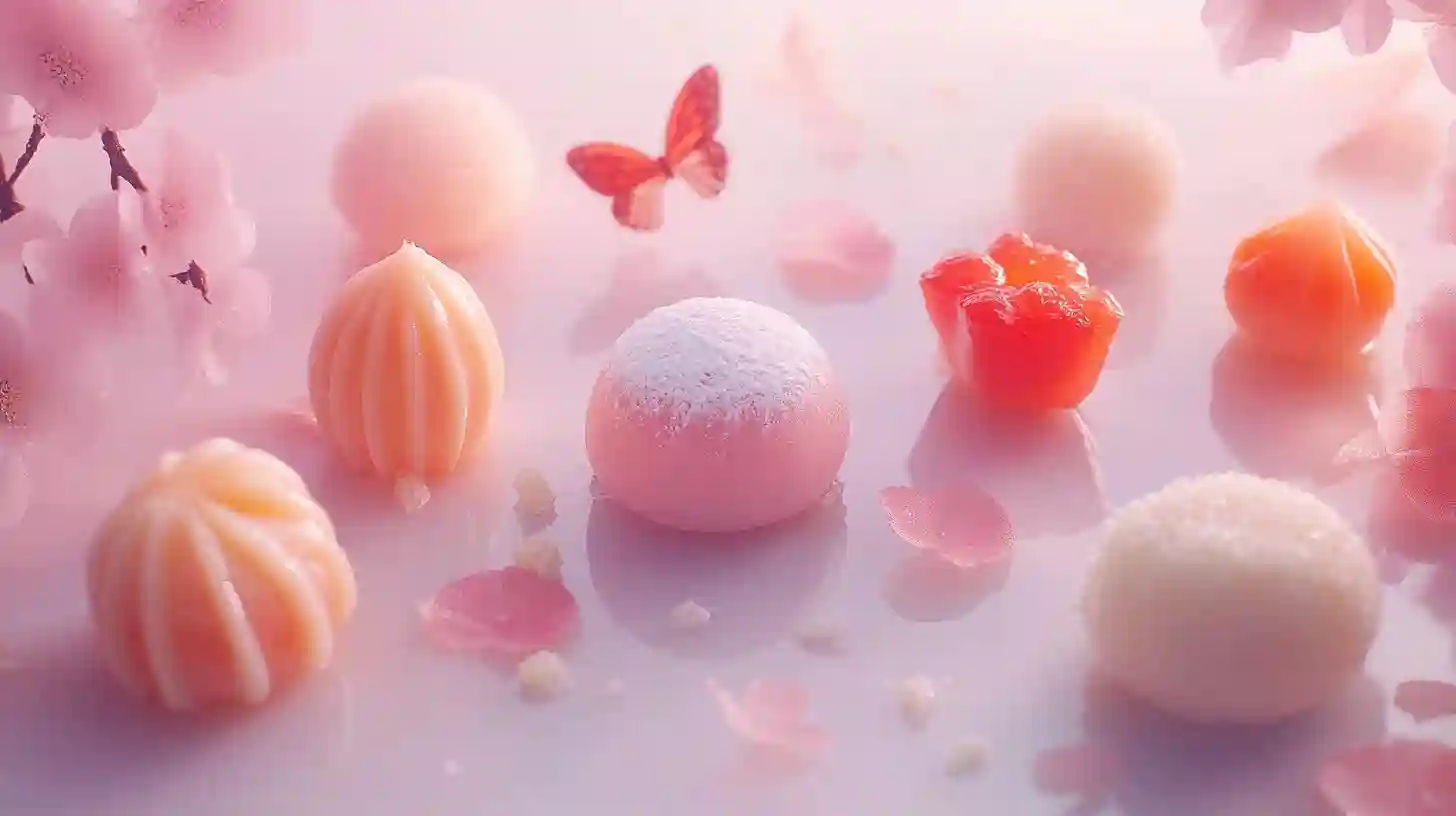
Japanese desserts are a captivating blend of cultural significance, aesthetic beauty, and a range of delightful flavors. They often reflect the seasons, traditions, and artistic expression found within Japanese society. Among these desserts, wagashi stands out as a traditional form that has been cherished for centuries. Wagashi comprises a variety of confections made from natural ingredients and is often presented beautifully, emphasizing harmony with nature and the changing seasons.
At the heart of wagashi is the use of mochi, a glutinous rice cake that serves as a base for many treats. Mochi is known for its chewy texture and is frequently combined with sweet fillings. Anko, sweetened red bean paste made from azuki beans, is a key component in many wagashi items. This paste can be smooth or chunky, each variation lending a different mouthfeel to the dessert. For instance, daifuku is a popular wagashi that consists of mochi filled with anko, sometimes accompanied by other fillings like strawberries or ice cream, creating a delightful contrast of flavors and textures.
Another staple of wagashi is nerikiri, a dough made from sweetened white bean paste and rice flour. It is often shaped into intricate designs, resembling flowers, fruits, or other natural elements, taking inspiration from the seasons. Each piece of nerikiri is not only a treat for the palate but also a feast for the eyes, reflecting the artistry and craftsmanship of the wagashi maker. These confections are frequently enjoyed during tea ceremonies, where they complement the flavor and bitterness of matcha, a finely powdered green tea. The harmony between wagashi and matcha enhances the overall experience, underscoring the Japanese philosophy of balance.
Seasonality plays a significant role in the creation of wagashi. Seasonal ingredients and themes are often incorporated into the design and flavors of these desserts. In spring, sakura (cherry blossom) flavors dominate, bringing a fragrance that symbolizes renewal. As summer approaches, refreshing treats with matcha or fruit flavors shine, perfect for cooling off. Autumn brings chestnut and sweet potato delights, while winter celebrates the warmth of traditional mochi and festive offerings. Each season presents an opportunity for wagashi artisans to showcase their creativity while honoring cultural traditions.
Beyond traditional wagashi, contemporary Japanese pastries have emerged, blending Western baking techniques with local ingredients and flavors. These modern creations reflect the growing globalization of food, where Japanese patisseries creatively incorporate elements from French and other international cuisines. Fluffy cakes, delicate tarts, and decadent pastries feature ingredients like matcha, yuzu (a citrus fruit), and black sesame, creating unique flavor combinations that excite the palate.
Japanese cheesecakes are particularly popular, known for their light, airy texture and subtle sweetness. Unlike their denser Western counterparts, Japanese cheesecakes often have a soufflé-like consistency that melts in the mouth. The addition of cream cheese, eggs, and sugar creates a delicate flavor profile that can be enjoyed plain or with fruit toppings. These cheesecakes exemplify the fusion of traditional and modern dessert-making techniques, making them a favorite among both locals and visitors.
Furthermore, the aesthetic presentation of pastries holds immense importance in Japanese culture. Each dessert is meticulously crafted, often designed to evoke specific sentiments or visual imagery related to nature. The attention to detail in the arrangement and appearance of desserts enhances the enjoyment, allowing people to appreciate not just the taste but the artistry behind the creation. This aesthetic approach is evident in cake decoration, where seasonal flowers or unique edible accents are commonly used.
As interest in Japanese cuisine continues to spread globally, the diverse world of wagashi and modern pastries captivates dessert lovers everywhere. With cookbooks, online tutorials, and cooking classes dedicated to these treats, enthusiasts can learn to prepare their own wagashi or pastries at home. This engagement fosters appreciation for the precision and patience required in making these confections, connecting people to Japanese culture through a tactile and flavorful experience.
Exploring Japanese desserts unveils a rich tapestry of tradition and innovation. From the delicate intricacies of wagashi to the contemporary twists of modern pastries, each bite tells a story rooted in cultural heritage. Discovering these treats allows not only for a culinary adventure but also an exploration of the beauty and artistry that defines Japanese dessert-making, making for an unforgettable experience that lingers long after the last morsel has been savored.